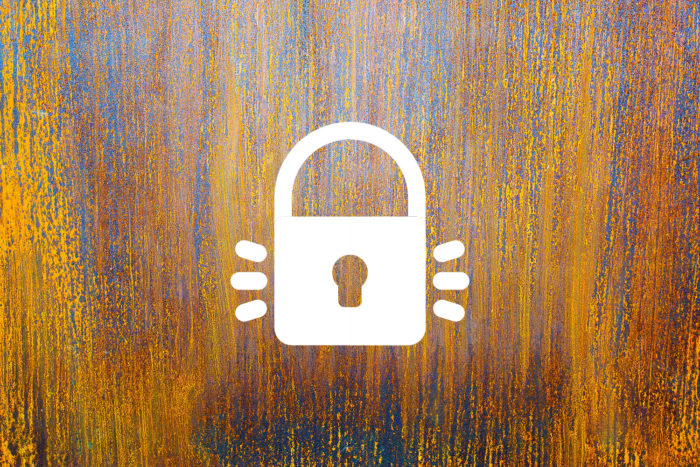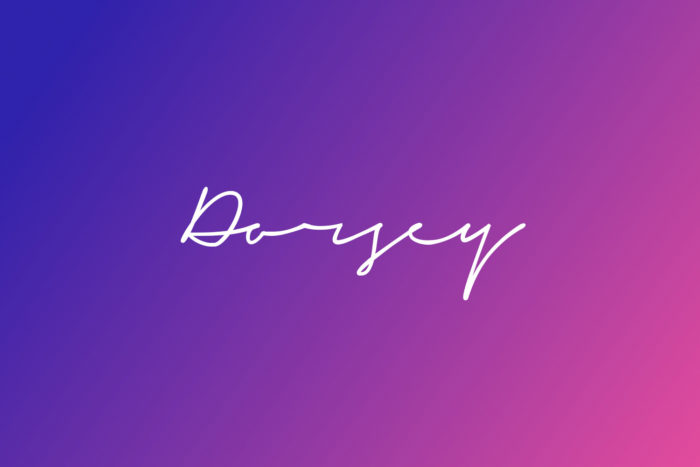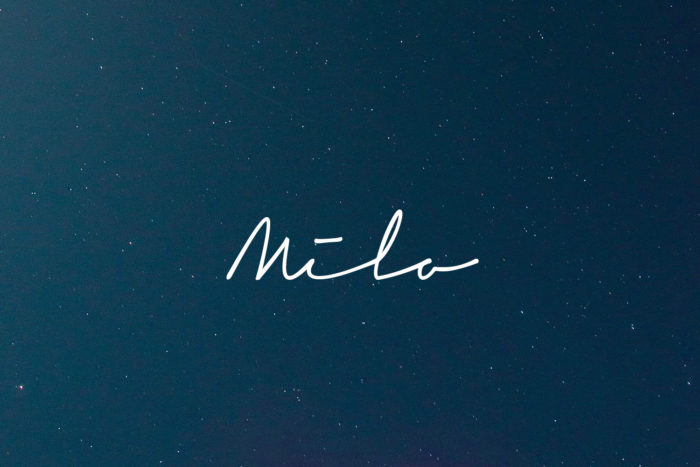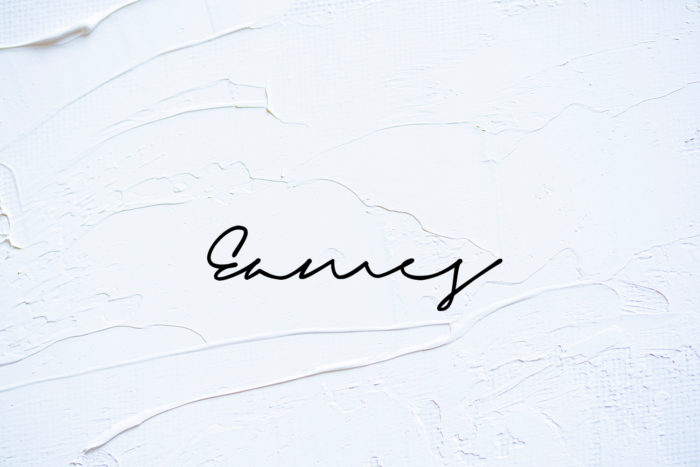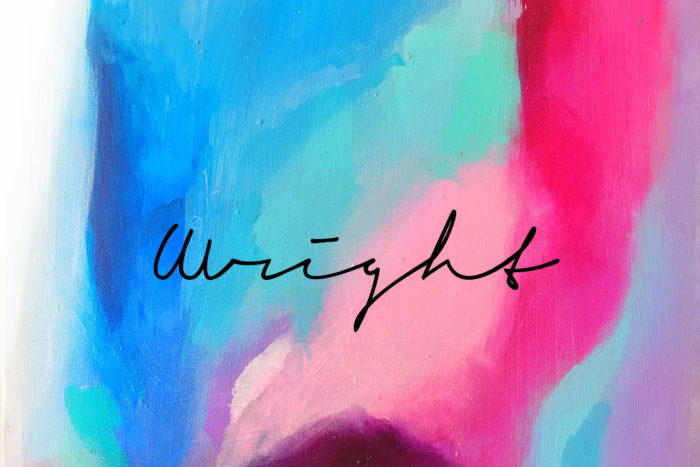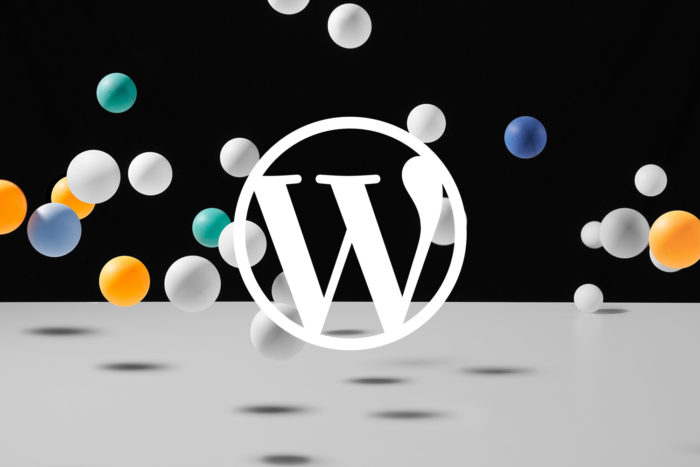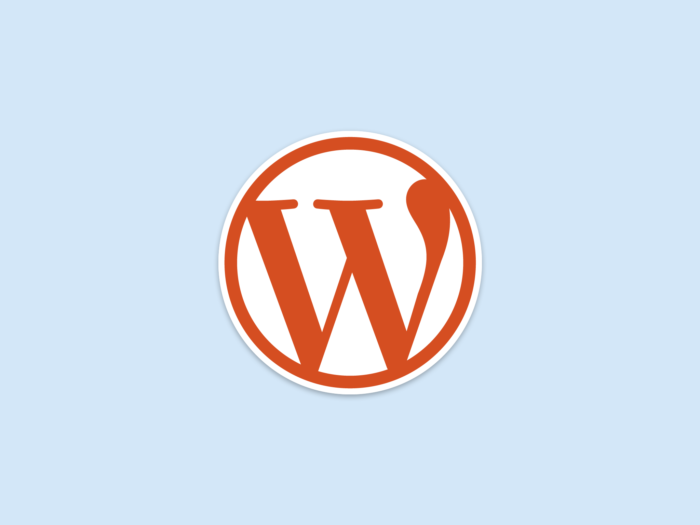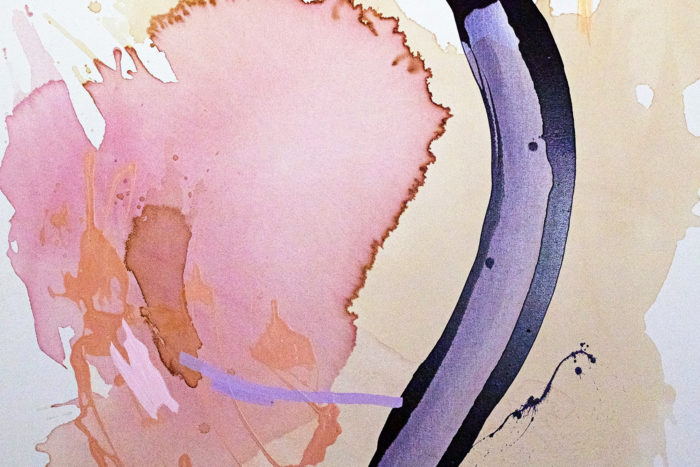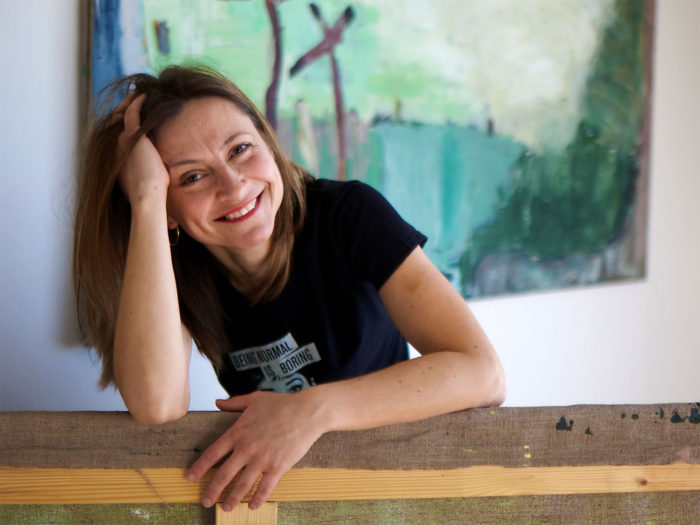
Our interview series continues this week with Munich, Germany based artist, Spela Semrov. Enjoy the Q & A along with a selection of Spela’s work along with a few special “behind the scenes” photos of her workspace).
Where are you located, and where do you originally you come from?
I currently live and work in Munich, Germany. I have lived in different places, like Greenville, SC where I found my first gallery (Mary Praytor Gallery). My homeland is Slovenia, a little European country full of nature and wildlife. That’s where I grew up and finished my studies.
What is your educational background?
I have a Bachelor of Fine Arts degree from Academy of Fine Art and Design in Ljubljana. I also have a degree as a Fine Art Professor and Industrial Designer.
How do you think your upbringing played a role in developing your creative point of view?
I grew up in a time and place without internet and good functioning TV so I had to find ways to occupy my time. It was good because I developed a great imagination. I was a wild child — most of the time playing in the woods — surrounded by animals and nature. I got a sense of what we as creatures of nature are, what the laws of nature look like, and how they apply to us. We can learn so much from this! Understanding nature can help us understand ourselves and make our experience of life more simple and enjoyable.
Although I really enjoyed life on country side, the narcissistic and judgmental society of our small town made it very hard for me to show my vulnerable and true self. That’s one of the main reasons why I repressed my artistic expression for a long time. Today this motivates me to fight against discriminating and judgmental culture and raise awareness about this through my art. People should be free.
Which artists, past or present, influence your work most?
Definitely Emerik Bernard, my professor at the academy. He taught me basics of composition which is hard wired in my brain today. Andrew Salgado‘s (who doesn’t know him nowadays?) use of vivid colors and brave lines, his story, his passion and attitude are just awesome. Manca Ahlin / Mantzalin with her architectural lace, what a brilliant idea! Mitja Ficko and I share a vision of going back to our roots, back to nature. Marc Chagall for exposing his most gentle feelings for the love of his life and his home. Wow, so inspirational. Then there are writers, poets, and musicians. Whenever I sense their depth and vulnerability they get me on their side. Pink Floyd, for instance, I consider The Wall as a true, everlasting masterpiece that I can forever gain inspiration from.
When did you become serious about your work?
I decided to go all in with my art, here in Munich, about 3 years ago. I went through a personal transformation that enabled me to become my true self. This was fundamental for me to being able to create art which I believe in. Art that is unfiltered expression of my feelings, impressions and life lessons that come from the deepest places within myself.
I also became familiar with the power and freedom of the internet and social media. This democratizes art which has a profound impact on artist’s community. It gives me a great opportunity to share the message about the importance of mental health and promote humanity which I’m so passionate about.
What are you working on right now?
I’m currently working on a painting that applies to women, and mothers especially. It’s about awareness of the impact that mothers have on their children. That a mother who doesn’t cure her wounds likely passes them onto her child. This goes on and on from one generation to another. So I appeal to stop this unhealthy heritage even if it means to sacrifice your relationship with your mother, or parents. I believe in some cases that’s unavoidable even if it’s painful. I believe that in order to save our children we have to first save ourselves.
Have you had any fortunate moments in your career that have been a catalyst?
Definitely with Mary Praytor, the gallery owner in downtown Greenville, SC. She wanted more and more of my paintings and this really got me painting like crazy. Also, when a happy customer sent me a letter saying that my painting was the first one that they put on the walls of their new home. I cried.
What most often inspires your creativity?
Feelings and stories (my own or others). I’m a sucker for psychological themes that go deep into the core searching for the truth. My everlasting source of inspiration is also nature with its power and beauty.
What is your creative process?
I usually make a few sketches just to break the ice and find a starting point for the painting. Often I start with an idea that later turns into something much deeper and personal. It takes a lot of concentration and experimentation (and frustration) to come to a point where I feel I can relax and just work on improving the image. This phase is the most enjoyable. At some point I feel like I can’t do anything more for the painting as it becomes independent. I put it on the “probation wall” in my kitchen to watch it every time I drink coffee or eat a meal and wait see if I get any new ideas on how to make it better. If I don’t then I consider the painting is done.
What do you believe is a key element in creating a good composition?
To forget about everything you learned about it. To let go of the control and simply trust that the knowledge will manifest itself through your unfiltered feeling.
How has your style and technique evolved over time?
I’ve been traveling back and forth from realistic to abstract my whole career. I’m a humble student of both styles and I never stay happy with what I’ve learned for long. I constantly strive for new knowledge. With time, I learned to be more gentle, not so wild with my strokes all the time. In general, I learned to have more patience with the whole painting process.
Why did you choose your medium and what do you wish you knew about it before you got started?
I paint on a canvas with acrylic paint because I work quite fast and it suits me that it dries out quickly. It also offers a lot of freedom if I want to add other materials to the painting. It’s practical to use and the quality is great. Looking back, I wish I knew I could also just paint on a canvas without putting it on a frame first. It comes handy in certain cases.
Are you experimenting with anything new at the moment?
Not so much with the material as with the technique and style. If I feel I’m becoming too comfortable I start using techniques that put me on the edge again. If I’m not a little bit nervous while I’m painting I think the work might become boring.
What are you trying to communicate with your work?
The importance of mental health for a better life, better society, better future. To share awareness of how important it is to use our human potential and spread love and compassion around the world starting with ourselves. To turn inwards first and clean our mess so we can contribute to the wellbeing of others. To accept ourselves and stop worrying about what others think of us. To embrace the nature which is engraved inside of us. I would like to be a role model in this, as a person and as an artist.
What role do you believe art plays in society?
It reminds people of our humanity, vulnerability, and importance of accepting our inner world. It connect us together and shows how under the skin we’re all the same. I see it as some sort of coping mechanism of our society’s way of life that tries to strip us of our souls… they teach us in schools that art is less important than other subjects by hardly giving it any hours to the school plan. But look around there’s art everywhere! It’s in our clothes, in the model of our car, on our playlist, in a book on our night stand, in the design of our sofa and our website. I’m not saying all art is the same quality, I’m just saying it’s a big part of our lives and it makes our lives better. Art is engraved in our DNA and we can’t escape it.
How has the internet influenced the way you market yourself?
It liberated me and gave me hope! It offered me the opportunity to make a statement with my work and show it to many people who would otherwise not have seen it. It gives a fair chance to everyone, I love it.
In the age of internet, do you think galleries are still relevant to artists?
Not nearly as much as they used to be. I think this is good because democratization of art representation brings a lot of freedom into our field. Artists can reach their audience without dealing with harsh and competitive practices. But galleries can also be very helpful to some artists and art collectors. They can help with communication and make things easier for both sides. Also, there’s nothing like a live experience and some galleries offer events, workshops, and children programs. So, galleries can certainly bring art and artists closer to people. I find this very positive.
What business advice do you have for young and aspiring creative professionals?
Get help from a professional who understands business, internet and social media. You can be a terrific artist but your work will stay hidden and overlooked if you don’t show it to the world in as many ways as possible. If you’re anything like me you can’t be good in all of them, so find help. I am lucky to have a husband who can drive this part for me.
Which creative blogs, publications, influencers, and events do you enjoy?
I’m doing research all the time and I read a lot. I find something helpful in almost everything I read and see. Artsy, Outsider, ARTnews Magazine, and Psychology Today are just some of them. For young aspiring artists I recommend a wonderful article from Olga Uzun of Admind Branding & Communications: The courage to be an imperfect artist or how not to get stuck on your way to perfection. I love Arnold Schwarzenegger’s “I hate plan B!” motivational video. I enjoy art fairs and open ateliers because of their richness of art and possibilities to talk face to face to fellow artists and collectors.
Which creative medium would you love to pursue but haven’t yet?
I would like to make a movie, lol. Something with the theater, with acting and scenes. I would love that!
What’s the best piece of advice you’ve been given?
To be as authentic as possible. To give all my might into pursuing my Plan A. To constantly learn. To have a state of the art website and to go wide on social media. To grow and learn from every little step I make and celebrate small wins.
To see more of Spela’s work or follow her latest, visit her website (Eero theme) or connect on social media:
Instagram
Facebook
